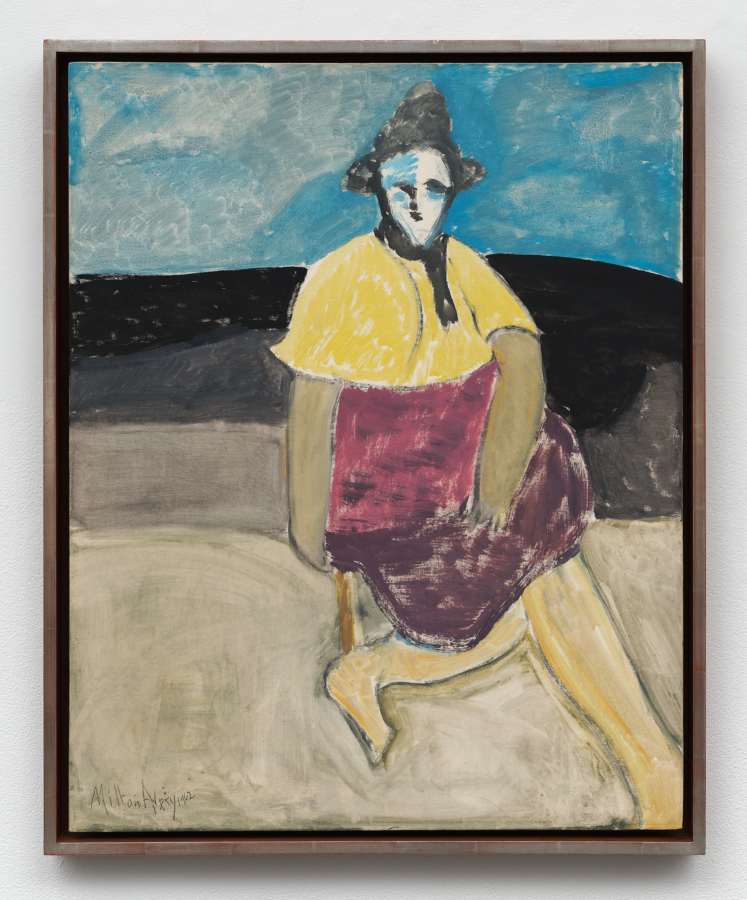
August 30, 2018
Download as PDF
View on The New York Times
With nearly 70 paintings and a four-and-a-half-pound book, the exhibition “Gertrude Abercrombie” reintroduces New York to the lonely, poignant art of an overlooked American Surrealist painter from the Midwest. Abercrombie (1909-77) — whose work has not had a solo show here since 1952 — was also a jazz devotee, Chicago bohemian and saloniste, and her return represents a herculean effort. Karma, the gallery (and publisher) where the show is on view, often outdoes itself, and has done so again, this time with assistance from the writer and independent curator Dan Nadel.
The essays in the book — which reproduces many additional paintings — take us deep into Abercrombie’s life and times. Robert Cozzolino, a curator at the Minneapolis Institute of Art, writes that “Abercrombie was at the hub of several overlapping cultural circles, and her Chicago was at the center of everything.” The circles were literary and musical as well as artistic, and her intimates sometimes called her “Queen of Chicago.” Dizzy Gillespie was a close friend, one of many jazz greats who attended and sometimes performed at the weekend parties regularly thrown in the late 1940s and ’50s by Abercrombie and her second husband, the music critic Frank Sandiford. The musicians sometimes stayed in Abercrombie’s big Victorian in Hyde Park when hotels refused black guests.
In another essay, the art historian Susan Weininger details Abercrombie’s psychology, shaped by an unloving mother and the daughter’s belief in her own homeliness — consistent with which, she sometimes wore a tall black witch’s hat. Ms. Weininger writes that Abercrombie was “celebrated for her warmth, humor and generous spirit,” but also points out that the artist was “well known for her reclusiveness, alcoholism, sarcasm and stinginess.” Ms. Weininger quotes a note Abercrombie once wrote to herself: “Surrealism is meant for me because I am a pretty realistic person but don’t like all I see.”
A few months before Abercrombie’s death, in 1977, the painter Don Baum staged a retrospective of her work at the Hyde Park Art Center, in the same space where the Chicago Imagists had risen to view a decade earlier. Surrealism is an art of non sequiturs, and several of the Imagists recognized her work as a precedent to their own. One of them, Roger Brown, painted a tribute to her that is reproduced in the Karma book, along with photographs of Abercrombie. We see her with her paintings, her cats and her daughter, Dinah Livingston, born in 1942 during her first marriage. In one image she hugs Gillespie; in others she sits with her work at one of Chicago’s sidewalk art fairs, which she loved for the variety of people she met.
Abercrombie’s paintings fill the spaces at Karma to almost overwhelming effect. They date from 1934, two years after she began to paint, to 1971, when her health began to fail. Her landscapes, interiors, still lifes, portraits and self-portraits are usually painted on Masonite and panel, not canvas, always tailored to striking if not flamboyant secondhand frames. The postage-stamp size “Compote and Grapes” (1941) has a frame of brown-stained wood seven inches across. Grooves in the wood mimic the recession of one-point perspective and also a box camera whose aperture is focused on the painted still life.
As for her compositions, Abercrombie favored empty stillness — whether threatening or gently mournful. Threat is prominent in her more loosely painted earlier efforts, especially in nocturnal landscapes featuring a lone woman walking a path toward a distant horizon or boxy, jail-like houses, or across the painting as across a stage. Abercrombie signals her anxieties about motherhood in one of these, “Dinah Enters the Landscape” (1943). Trees are either regimented in small groups, with cloudlike foliage, or solitary and bare, seeming to sway in lament. Backgrounds combining variegated colors brushed together depict skies, fields, seas, floors or walls, creating a vaporous softness and a comforting sense of Abercrombie’s presence.
In this show’s trajectory, Abercrombie largely forsakes more roughly worked surfaces for the crispness of René Magritte and a more professional Surrealism. Now empty rooms and small isolated objects like shells, playing jacks, eggs and a wood box cloak alienation in a sense of control and artifice. Especially precise are three paintings of several doors in different colors arranged edge to edge to form a screen. Resembling a Beckettian set design, they actually mimic Chicago construction sites, which at that time were frequently shielded from the public with doors from the old building demolished to make way for the new one.
A black cat moves with impunity among the shifting styles so beautifully laid out in this exhibition. Aloof, elusive, uneasy, it may be Abercrombie herself, who is given a new visibility that should be coaxed into an even greater fullness.



